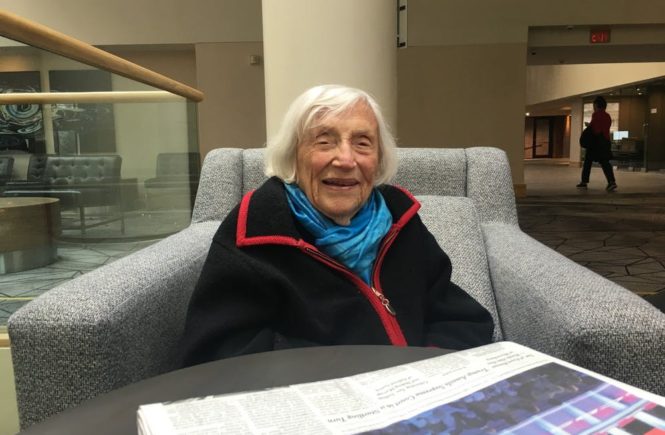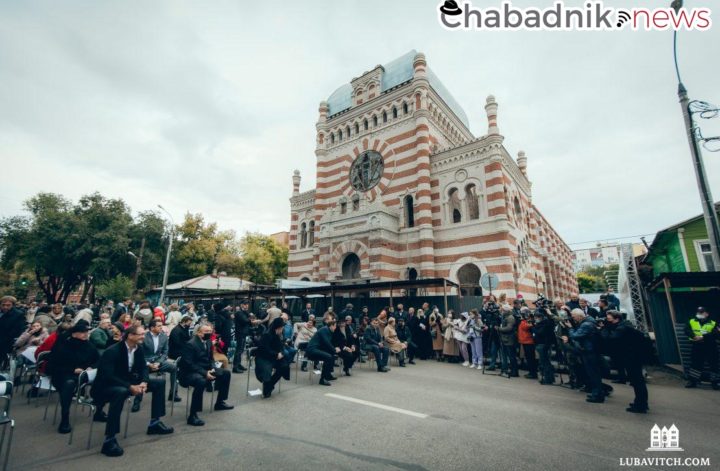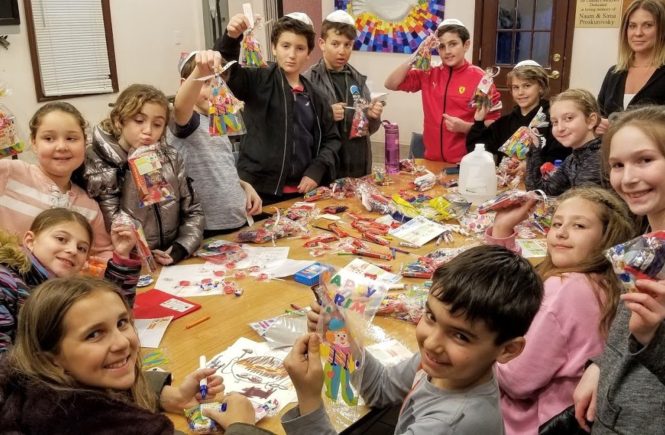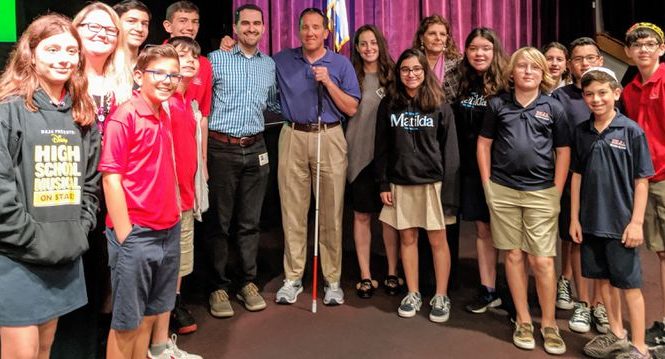On Thursday, 99-year-old Marthe Cohn told the story of how she changed history.
Cohn’s talk, organized by the Scharf Family Chabad House, was held in a crowded McCosh Hall 50 on Feb. 27. Pointing to medals displayed in front of her, she described how she survived the Holocaust, spied for the French Army, and obtained information that helped end World War II. The event was called “Behind Enemy Lines,” sharing a title with the book Cohn recently wrote about her experience.
In 1920, Cohn was born to a Jewish family in the French province of Lorraine, near the border between France and Germany. When Cohn grew up, Lorraine was a part of Nazi-occupied France. Its people were forbidden to speak French, so Cohn was raised to be fluent in German.
Even before becoming a spy, Cohn used her German fluency to resist the Nazi regime. Along with a farmer named Noel Degot, she and her older sister Stéphanie assisted people who wanted to escape to unoccupied France.
One day, however, Stéphanie made the mistake of sending Degot a letter that contained her maiden name. That letter was discovered by the Sicherheitspolizei (SiPo), a division of the Nazi secret police.
On June 17, 1942, the SiPo broke into Cohn’s house and arrested Stéphanie.
“They took her to their offices and questioned her. She refused to answer any questions, because anything she would have said would have been a penalty to the rest of the group,” Cohn said.
Two hours later, the SiPo returned to Cohn’s house and arrested her father in order to put further pressure on Stéphanie to give information about their resistance operations.
“Even with the presence of my father, she refused to give any information,” Cohn said.
Although Cohn’s father was eventually released, her sister remained in prison for a month. Then, she was transferred to a camp called Route de Limoges, south of the French town of Poitiers.
Cohn and her family were able to arrange for her escape, and Cohn snuck to the Route de Limoges to relay this message to Stéphanie. Stéphanie told her she was the only person providing medical assistance to a group of imprisoned children. Since there was nobody else in the camp who could carry on her work, Stéphanie refused to escape.
“I reminded her that her mother needed her as much as the children,” Cohn said. “And she answered me, ‘Don’t you realize that if I escape, you are all going to be arrested?’ I had never thought about that.”
After that meeting, Stéphanie was transferred to two other torture camps. In September of 1942, she was deported to a then-unknown destination. She was never heard from again.
Cohn later discovered that her sister had been sent to Auschwitz.
The Nazi occupation of France meant that the rest of Cohn’s family was at risk of being arrested. However, they were able to escape with the help of a man named Mr. Charpentier. He provided them with forged papers that identified them as Germans.
“I told him, ‘You cannot do that, Mr. Charpentier, because they’ll take your wife and little boy.’ And he answered me, ‘If I cannot help you, I cannot live with myself,’” Cohn said.
According to Cohn, when she asked him how much the paperwork would cost, Mr. Charpentier started crying, and told her, “I do not want any money. I want to save you.”
With the help of his identity cards, Cohn and her family traveled to Arles. From there they moved to Marseille, where Cohn attended the Red Cross school and studied to become a nurse.
She later moved to Paris, where she met her fiancé, Jacques Delaunay. He was a medical student who fought in the French resistance. One day, Cohn learned from Delaunay’s mother that he had been executed by the Nazis in October 1943.
Cohn joined the French Army in November 1944.
When she first presented herself for duty, her commander did not take her seriously, she explained, because she had blonde hair and blue eyes.
“He thought I had no substance,” Cohn said.
She offered her services as a nurse, but the commander told her that he had no need for nurses. He could, however, use a social worker.
Because he gave Cohn no instructions on how she was to carry out her new role, she decided to visit the French soldiers in their foxholes and bring them supplies.
One time, on her way to the foxholes, Cohn encountered Colonel Pierre Fabien. Fabien was a prominent figure in the French resistance. In 1942, he had killed a German in a metro station, thus perpetrating the first of a series of assassinations of German officials in occupied France.
When he met Cohn, Fabien asked if she would be willing to answer his phone during his lunch break. She agreed, and he brought her to his home, where he showed her around and told her what she could do while awaiting phone calls.
“He said to me, ‘I am sorry. I have nothing for you to read. There are only German books here.’ I answered, ‘That’s quite alright. I read German fluently.’ He got extremely interested, and he asked me if I spoke German as well as French,” Cohn said.
When she replied in the affirmative, Fabien asked if she would be willing to be transferred into the intelligence service of the French First Army. Cohn agreed.
“He left. I sat on a chair, and I wondered […] what predicament I had put myself in,” Cohn said.
In January 1945, she was assigned to the Commanders d’Afrique, who were stationed near the Vosges Mountains in France and were overseen by Colonel Georges-Régis Bouvet.
During this time, the Germans were fighting in Alsace to keep the Allies out of Germany. Bouvet assigned Cohn to interrogate Nazi prisoners of war to gain information on their troop movements.
“I never tortured anyone,” Cohn said. “I followed the conventions and treaties. I was able to get the information, and I can boast about it, because in one of these medals on the table [the Croix de Guerre], in one of the citations, it says that I provided the colonel with very precise information which would later confirm the retreat of the Germans from Alsace into Germany.”
After this first achievement, Cohn made more contributions to the war effort.
While the Allies were pushing into Germany, Cohn was ordered into enemy territory to gain information. She spied on the activities of civilians in a town called Freiburg and on the soldiers at the nearby Siegfried Line — a defensive line built alongside the German border, opposite France’s Maginot Line.
For her mission, Cohn had been instructed to create her own cover story, because her commanders thought it would be more convincing than one given to her. Cohn decided to pose as a German nurse from Alsace who was searching for her missing fiancé.
On her way to the Siegfried Line, Cohn joined a group of Germans headed in the same direction. Due to her blonde hair, blue eyes, and fluency in German, they believed her story.
One of her group-mates was a Schutzstaffel (SS) officer. He had been wounded while fighting in Russia and was now assigned to the Siegfried Line as a noncommissioned officer.
“As we walked, suddenly that noncommissioned officer fainted. I was a good German nurse. I took care of him. When he regained consciousness, he was so grateful that he invited me to come and visit him at the Siegfried Line, and he gave me his phone number,” Cohn said.
She did not take him up on his offer at first. However, three weeks later, when she learned on the German radio that the Allies were going to invade Freiburg, Cohn went to obtain information from the SS officer.
However, there were very few troops at the Siegfried Line when she reached it.
“I discovered that it had been completely evacuated,” Cohn said. “Knowing it was true, I also knew right away that if our Allied armies had not to fight against the Siegfried Line, they could much faster occupy the rest of Germany and terminate the war.”
She hurried back to tell her commanders. However, when she reached Freiburg, she was blocked by a tank. The Allied invasion had already begun.
Although Cohn’s German looks had served her well in espionage, they now endangered her life. The soldiers in the tank could easily mistake her for an enemy and kill her.
“How was I going to explain to the people in the tank that I was a friend and not an enemy? I had no document, nothing to prove who I was,” Cohn said. “So I went in the middle of the street and I raised my right hand as high as I could, and I made the ‘V,’ the victory sign, of Winston Churchill.”
The tank halted. Cohn spoke with the men within and demanded to be taken to French headquarters as quickly as possible. There, she told her commander about the abandoned Siegfried Line.
He didn’t believe her at first, thinking the Germans were setting a trap.
“He sent a patrol to the Siegfried Line, which came back hours later and said, ‘It’s true, the Siegfried Line is completely evacuated,’” Cohn said.
At breakfast the next day, Cohn’s commander asked if she would go back to being a social worker.
“I told him, ‘No, my mission terminates the day of the armistice,’” Cohn said.
Cohn said she never thought about the danger she faced in her espionage work.
“I had only time to think about my mission and that I don’t get caught. My security, that’s all I thought. I had no time for anything else. I didn’t even think about my family during that time,” she said.
As the Allied army prepared to continue their offensive into Germany, Cohn went ahead of them and encountered a Nazi colonel. She told him that she had fled from Freiburg when the French invaded and feigned distress at the Germans’ plight.
“The colonel told me, ‘Don’t be so afraid. The war’s not ended.’ And he told me exactly where the remnant of the German army was hidden in ambush in the Black Forest,” Cohn said.
Immediately, she traveled to Switzerland and relayed the information to the French Army. Due to her efforts, the French Army avoided the ambush and gained a tactical advantage that contributed to their eventual victory against the Germans.
“And that’s how I got all these medals,” Cohn said.
During her time on campus, Cohn also sat down with The Daily Princetonian for a Q&A, where she delved into her views on modern politics, the Trump Administration, and how to preserve memory of the Holocaust.




